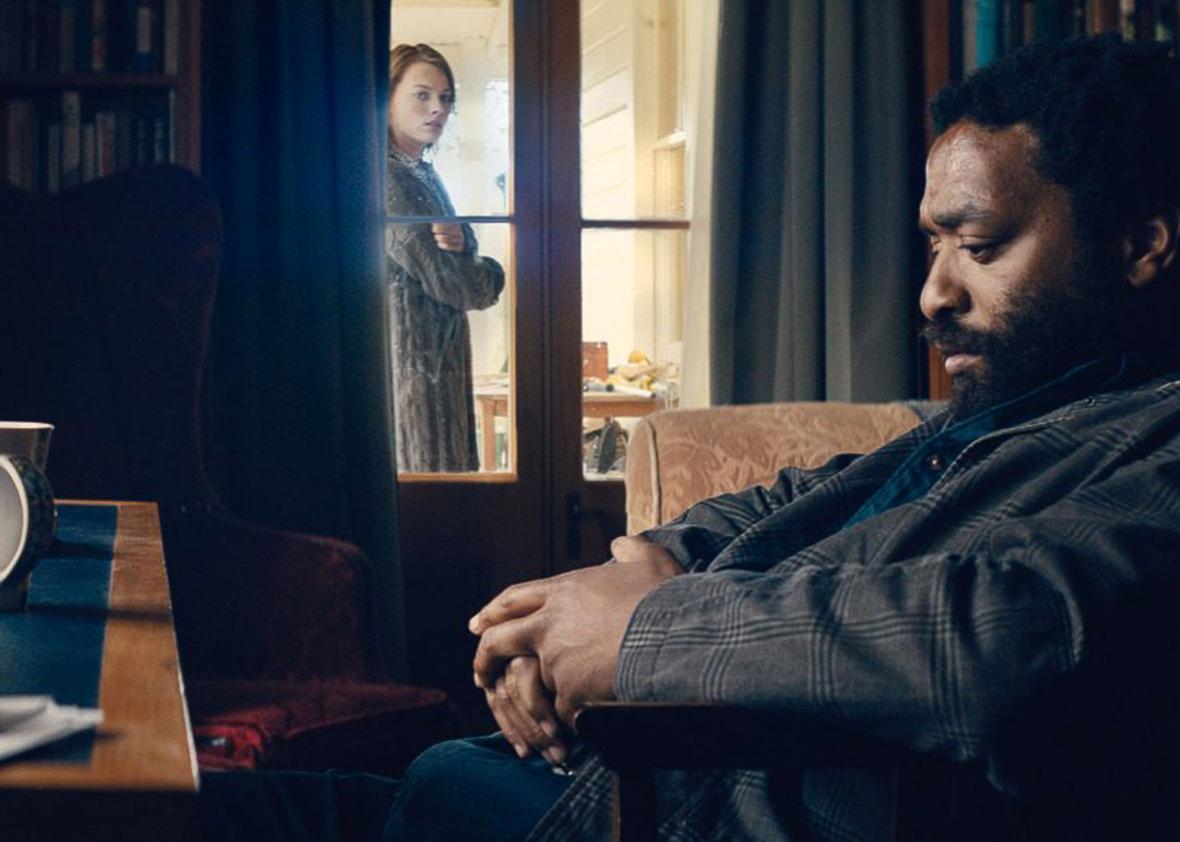In Z for Zachariah, newly acquainted Ann (Margot Robbie) and John (Chiwetel Ejiofor) sit on the front porch of her old family house, discussing the natural disaster that has decimated most of civilization, save for them. John suggests that something unusual in the weather patterns has protected the valley from the toxins and radiation that have crippled life everywhere else. “Crazy it’s still here,” he says in wonderment at the lush, thriving farmland around them. Ann describes her father’s words prior to his leaving with her brother to search for survivors (they never returned): “God was looking out for them.” “Nothing crazy about that,” she says matter-of-factly in her plucky Southern accent, a small smile on her face.
In sci-fi, the end of the world as we know it can take any number of doomsday angles—zombies, aliens, weather, disease. It can look like greed, oppression, and desolation. Or it could look like the devil himself. The perspectives of John the scientist and Ann the faithful farmer boil Z for Zachariah down to the struggle that underlies all such apocalyptic tales: the will of God versus the will of man.
At the beginning of director Craig Zobel’s intense, moody drama, we’re introduced to Ann and her means of survival, which include donning a makeshift hazmat suit while traveling to a ghost town outside of her valley for canned goods and books. She encounters John while hunting for food in the lush mountains where life thrives, save for a barren waterfall—she warns him that the water he’s bathing in is contaminated, as it comes from outside of the valley. When the toxic effects strike, Ann brings John to her home and nurses him back to health.
As John gets better, he’s able to apply his scientific know-how to improve upon Ann’s already impressive survival skills—including instructing her in how to extract gas for her tractor from a gas pump without electricity. She’s receptive to all of his suggestions until he sets sight on the small church her father built near their home. The wood would be perfect for building a generator that could convert the contaminated water into working electricity, but Ann is reluctant—“It’s because of Him that we survived,” she says. “It’s about rebuilding,” he replies calmly. And then, carefully rephrasing his idea in a way that she will accept: “Maybe God—or your father—put this here for us.”
Zobel (whose last film was Compliance, one of the most uncomfortable and frustrating—in a good way—films in recent memory) and screenwriter Nissar Modi (who very loosely adapted the screenplay from Robert C. O’Brien’s 1974 young adult novel of the same name) let John and Ann’s relationship unfold shakily and unexpectedly in tense moments such as these. As the pair continue to learn more about each other—a funny scene involves John getting drunk off of an abundance of untouched beer leftover in the nearby convenience store—the film feels realistically uncertain about what their relationship is and could be. At any moment, we know, everything they’re building could be upended by saying or doing the wrong thing.
Or meeting the wrong person. About midway through the story, Caleb (Chris Pine) appears in the valley. A miner who managed to survive the disaster under suspicious circumstances, Caleb seems to be everything John is not and a lot of what Ann identifies with: namely, a Christian who grew up in a town nearby. (John is from “up north.”) Ann is immediately welcoming to Caleb, but John is more cautious, and it’s easy to see why: Pine imbues Caleb with a trickster spirit, his molasses-filled Southern accent delivering moral platitudes that reek of possible disingenuousness. The competition between the two for Ann’s trust and affection is evident almost immediately—John’s wary squints and Caleb’s puckish glints cross silent paths whenever Ann’s not looking.
It’s those quiet, dialogue-free moments that resonate most powerfully in Z for Zachariah. Zobel’s lingering camerawork here (the cinematographer is Tim Orr) employs deft restraint to build tension, much as Compliance did. The three actors make for a compelling trio, but Ejiofor gets by far the most out of his performance—he wonderfully conveys John’s constant struggle to understand and accommodate Ann and her faith. His befuddled, silent reaction when Ann and Caleb start praying before their meal is priceless.
A movie set at the end of the world, with one black person and two white ones, may remind some viewers of the 1959 Harry Belafonte film The World, the Flesh, and the Devil. Yet where that film dealt explicitly with black self-identity and gender politics just as the civil rights movement was picking up steam and the sexual revolution was on the horizon, Z for Zachariah almost completely avoids either of those issues in favor of doubling down on the reconciliation of faith with tangible modes of survival. (When I spoke with Zobel at Sundance, where the film made its world premiere, he told me that the earlier film did in fact serve as an inspiration during filming, though the screenplay was not originally written for characters of any specified races. “Also,” he added, “it seems slightly weird to have only white people at the end of the world.”)
Z for Zachariah could have benefitted from a deeper plunge into the ways race and gender relate to faith. I was a little unsatisfied, too, by the conclusion, which feels too ambiguous for its own good. Still, Zobel and Modi have crafted a thoughtful narrative about the experience of navigating and attempting to accommodate others’ personalities. Sci-fi allows us to ruminate on what beliefs or prejudices will truly matter in the frightening future. Z for Zachariah makes clear that no matter what those beliefs are, they will ultimately be tested in the end.
